The Graph Database Market is estimated to be valued at USD 3.8 billion in 2025 and is projected to reach USD 22.3 billion by 2035, registering a compound annual growth rate (CAGR) of 19.0% over the forecast period.
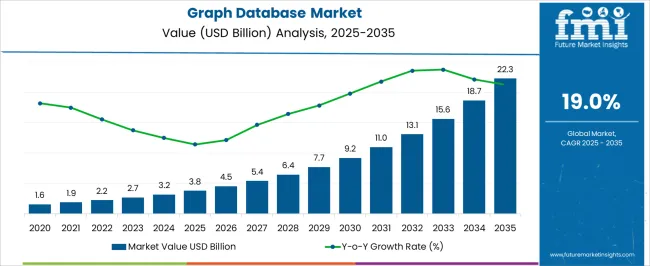
| Metric | Value |
|---|---|
| Graph Database Market Estimated Value in (2025 E) | USD 3.8 billion |
| Graph Database Market Forecast Value in (2035 F) | USD 22.3 billion |
| Forecast CAGR (2025 to 2035) | 19.0% |
The graph database market is expanding rapidly, fueled by the need for advanced data management solutions capable of handling complex and interconnected datasets. Industry journals and technology company reports have emphasized that traditional relational databases are increasingly unable to meet the performance requirements of real-time analytics, fraud detection, and recommendation engines. Graph databases, by contrast, have gained traction due to their ability to analyze relationships across diverse data points with greater speed and accuracy.
Cloud service providers and enterprise technology vendors have accelerated their investments in scalable graph platforms, enhancing interoperability with big data ecosystems and AI-driven analytics. Furthermore, regulatory frameworks around data security and compliance have increased enterprise demand for graph solutions that support transparent data lineage and auditing.
Market growth is also supported by the digital transformation of industries such as banking, e-commerce, telecommunications, and healthcare, where connected data insights are critical. Over the next few years, the market is expected to benefit from broader adoption of graph platforms, advanced fraud analytics applications, and large-scale enterprise deployments seeking competitive differentiation through data-driven decision-making.

The Platform segment is projected to hold 57.6% of the graph database market revenue in 2025, establishing its position as the dominant solution category. Growth has been driven by enterprise demand for comprehensive platforms that provide scalability, high availability, and integration capabilities across multiple data environments.
Technology updates from leading vendors have highlighted enhancements in query performance, visualization tools, and API support, which have reinforced adoption. Enterprises have increasingly preferred platform-based solutions to manage complex workloads in real-time recommendation systems, fraud detection, and supply chain analytics.
The ability of platforms to support hybrid deployment models across cloud and on-premises environments has further elevated their value proposition. With enterprises prioritizing end-to-end solutions over standalone tools, the Platform segment is expected to maintain its leadership in the graph database market.

The Fraud & Risk Analytics segment is projected to account for 28.4% of the graph database market revenue in 2025, reflecting its leading role among applications. Financial institutions, telecom operators, and e-commerce platforms have increasingly adopted graph databases to identify fraudulent patterns and assess risk in real time.
Industry research and enterprise case updates have indicated that graph models enable the detection of hidden relationships and anomalous behavior across large transaction datasets, providing superior accuracy compared to traditional systems. Regulatory pressures to enhance anti-money laundering (AML) and know-your-customer (KYC) compliance have further accelerated adoption.
The growing complexity of digital fraud schemes has underscored the necessity of advanced graph-powered analytics. As enterprises prioritize safeguarding customer trust and reducing financial losses, the Fraud & Risk Analytics segment is expected to sustain its dominant position in the application landscape.

The Large Enterprises segment, specifically organizations with 500–999 employees, is projected to contribute 32.7% of the graph database market revenue in 2025, maintaining its lead in enterprise size adoption. Growth has been supported by the increasing digitalization of mid-to-large enterprises that require advanced data solutions to remain competitive.
Corporate disclosures and IT investment announcements have shown that these enterprises often possess the resources to implement graph platforms while still valuing cost efficiency compared to larger global corporations. Their business models typically involve complex data interactions across supply chains, customer networks, and financial systems, which align well with the strengths of graph databases.
Furthermore, these enterprises are agile enough to adopt new technologies quickly, enabling faster ROI from graph-based deployments. As organizations in this size bracket continue to scale and prioritize data-driven innovation, the Large Enterprises (500–999 employees) segment is expected to play a pivotal role in driving overall market adoption.
The rising demand for digital transformation during the outbreak of COVID-19 spurred the demand for efficient data management tools.
The healthcare sector, finance industry, and many other key industries started to shift toward digital platforms, driving the graph database market growth in the historical period.
| Attributes | Values |
|---|---|
| Historical CAGR | 16.5% |
| Valuation in 2020 | USD 1.46 billion |
| Valuation in 2025 | USD 2.69 billion |
The growing gig economy, the rising requirement for real-time data analysis, and the increasing technological infrastructure drive the demand for complex data management tools in the forecasted period. This ensures the propulsion of the global graph database market size in this era.
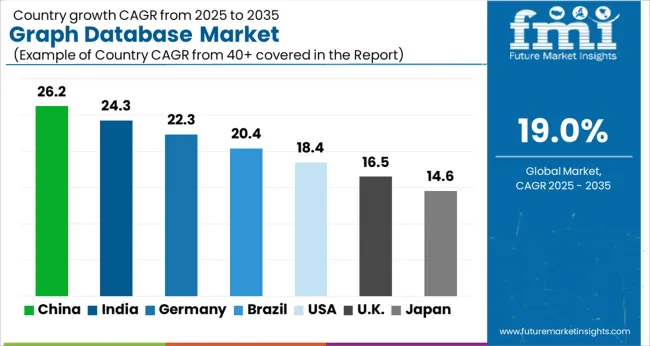
With the bolstered technological infrastructure in North America, the growth prospects for leading players in the graph database market in the region are rising. This helps them contribute more to the landscape, propelling the graph database market growth.
Europe is embracing Industry 4.0, enabling the global graph database market size to be enhanced. Hence, it is another key contributor to the industry.
The development in different sectors, including FinTech, manufacturing, and the healthcare industry, the Asia-Pacific region heavily contributes to the industry.
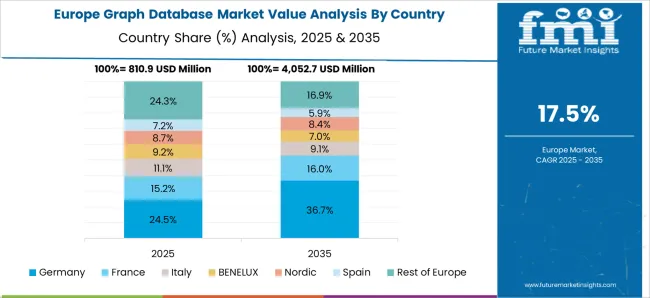
Germany, a hub for the manufacturing industry, will embrace Industry 4.0. This includes smart manufacturing processes, efficient supply chain operations, and digital transformation.
These rising requirements will surge the demand for efficient data management software and tools. This will create more prospects for leading players in the graph database market in the country.
The development of real-time graph database solutions for streaming data analysis in Germany will enlarge the graph database market size at a promising CAGR of 8.9% through 2035.
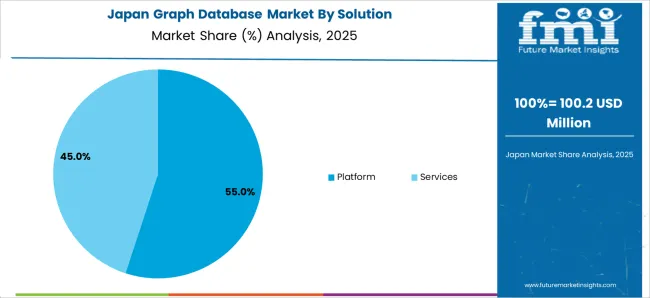
To bolster people’s money transactions, Japan’s government has taken various steps. The finance sector embraces graph databases to mitigate the growing risks of financial fraud. With the growing usage of these systems, the country emphasizes its regulatory compliances, which enhance safe transactions.
Risk detection, reducing money laundering cases, creating digital footprints of economic transactions, etc., are key motives driving the demand. These factors will ensure the graph database market growth to occur at 9.2% in the forecasted period.
The United States of America will encompass the graph database market size enlargement at a CAGR of 13.5% between 2025 and 2035.
With the growing technological infrastructure, the type of crimes in the country has also evolved. It is estimated that the government will likely face a loss of USD 10.5 trillion in 2025.
Predicting cyber threats and potential risks of data leakage can be addressed with the help of graph databases. Due to these factors, leading players in the graph database market are encouraged to produce efficient software solutions.
China’s graph database market growth will be accelerated at a CAGR of 19.9% through 2035. China’s government is focusing on infrastructural development, which includes the advancement of the healthcare sector.
The medical industry in the country is subjected to the revolution in its segments, including telemedicine, electronic medical records, and public health surveillance. The wide applications of graph databases in the industry to revolutionize its competitive landscape surge their demand in the sector.
The banking and finance services in the country are propagating significantly in the country. They show reliance on digital services to provide a seamless service to their customers.
FinTech platforms in the country will likely demand graph databases for effective threat detection or data breaches, offering an additional security layer to its customers.
The growing number of customers in the country will likely contribute to the propulsion of the local ecosystem. Thus, Australia’s graph database market size will be enlarged at the highest rate, projecting a CAGR of 22.9% through 2035.
Data security, risk analysis and forecasting, and seamless scalability are crucial segment drivers for the graph database platform and fraud and risk analytics segment.
| Category | Solution- Graph Database Platform |
|---|---|
| Industry Share in 2025 | 63.3% |
| Segment Drivers |
|
| Category | Application- Fraud & Risk Analytics |
|---|---|
| Industry Share in 2025 | 24.3% |
| Segment Drivers |
|
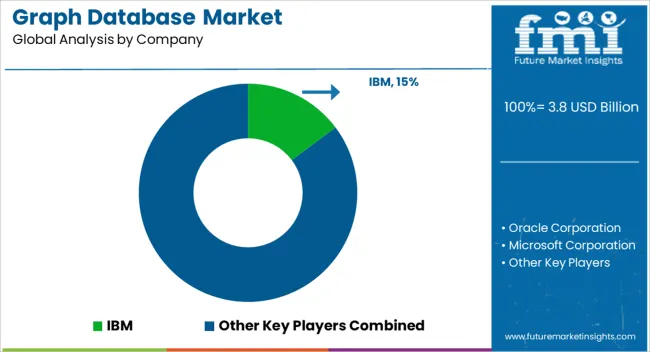
With the rising demand for data security services, various growth prospects for leading players in the graph database market can be identified. Product innovation will likely spur due to the varying consumer demands, inflating the global graph database market size.
Apart from this, key industry players expand using collaborations, partnerships, acquisitions, and mergers in the competitive landscape.
New entrants can negotiate the threat of key players through innovation. Also, strategic alliances can help them gain a better market share against their assets.
Key Recent Developments
| Attributes | Details |
|---|---|
| Estimated Industry Size in 2025 | USD 3.17 billion |
| Projected Industry Valuation in 2035 | USD 18.68 billion |
| Value-based CAGR 2025 to 2035 | 19.4% |
| Forecast Period | 2025 to 2035 |
| Historical Data Available for | 2020 to 2025 |
| Analysis in | Value in USD billion |
| Key Regions Covered |
North America; Latin America; East Asia; South Asia and Pacific; Western Europe; Eastern Europe; Central Asia; Russia & Belarus; Balkan & Baltics Countries; Middle East and Africa |
| Key Segments Covered |
Solution, Application, Enterprise Size, Industry, Region |
| Key Countries Profiled |
The United States, Canada, Brazil, Mexico, Germany, The United Kingdom, France, Spain, Italy, Poland, Russia, Czech Republic, Romania, India, Bangladesh, Australia, New Zealand, China, Japan, South Korea, GCC Countries, South Africa, Israel |
| Key Companies Profiled |
IBM; Oracle Corporation; Microsoft Corporation; AWS; SAP; DataStax; Franz Inc.; Neo4j Inc.; Orient DB; MongoDB; Objectivity Inc.; Stardog Union Inc.; Teradata Corporation. |
Based on solutions, the industry will be segmented into Graph Database Platforms, On-premise, and Cloud-based/Web-based solutions and Services, which will include Data Modeling & Analytics, Database Integration, Technology Consulting, and Support & Maintenance services.
Fraud & Risk Analytics, Recommendation Engines, Supply Chain Management, Clinical Research & Drug Discovery, Customer Analytics, and Others are key application segments of the industry.
Based enterprise size, Small Offices (1-9 employees), Small Enterprises (10-99 employees), Medium-sized Enterprise (100-499 employees), Large Enterprises (500-999 employees), and Very Large Enterprises (1,000+ employees) are key segments.
The industry segment is classified as follows:- Finance , Manufacturing & Resources, Distribution Services, Services, Public Sector and Infrastructure
The following key regions segment the sector:- North America, Latin America, East Asia, South Asia and Pacific, Western Europe, Eastern Europe, Central Asia, Russia & Belarus, Balkan & Baltics Countries and the Middle East and Africa.
The global graph database market is estimated to be valued at USD 3.8 billion in 2025.
The market size for the graph database market is projected to reach USD 22.3 billion by 2035.
The graph database market is expected to grow at a 19.0% CAGR between 2025 and 2035.
The key product types in graph database market are platform, _cloud-based/web-based, _on-premises, services, _data modeling & analytics, _database integration, _technology consulting and _support & maintenance.
In terms of application, fraud & risk analytics segment to command 28.4% share in the graph database market in 2025.






Full Research Suite comprises of:
Market outlook & trends analysis
Interviews & case studies
Strategic recommendations
Vendor profiles & capabilities analysis
5-year forecasts
8 regions and 60+ country-level data splits
Market segment data splits
12 months of continuous data updates
DELIVERED AS:
PDF EXCEL ONLINE
Graphite Materials Market Size and Share Forecast Outlook 2025 to 2035
Graphene Infused Packaging Market Size and Share Forecast Outlook 2025 to 2035
Graphene Coated Fishing Gear Market Size and Share Forecast Outlook 2025 to 2035
Graphene Based Material Market Size and Share Forecast Outlook 2025 to 2035
Graphene Electronics Market Size and Share Forecast Outlook 2025 to 2035
Graphite Market Growth – Trends & Forecast 2025 to 2035
Graphene Nanocomposites Market 2025 to 2035
Graphics Processing Unit Market - Growth, Demand & Forecast 2025 to 2035
Analyzing Graphene Films Market Share & Industry Insights
Geographic Information System (GIS) Market
Holographic Blister Foil Market Forecast Outlook 2025 to 2035
Holographic Transfer Film Market Size and Share Forecast Outlook 2025 to 2035
Holographic Labels Market Size and Share Forecast Outlook 2025 to 2035
Holographic Display Market Size and Share Forecast Outlook 2025 to 2035
Aerographite Market Size and Share Forecast Outlook 2025 to 2035
Nanographic Printing Market Size and Share Forecast Outlook 2025 to 2035
Holography in Medical Imaging Market Analysis Size, Share, and Forecast Outlook 2025 to 2035
Holographic Tear Tape Market
Flexographic Printing Plate Market Size and Share Forecast Outlook 2025 to 2035
Photographic Paper Market Size and Share Forecast Outlook 2025 to 2035

Thank you!
You will receive an email from our Business Development Manager. Please be sure to check your SPAM/JUNK folder too.
Chat With
MaRIA